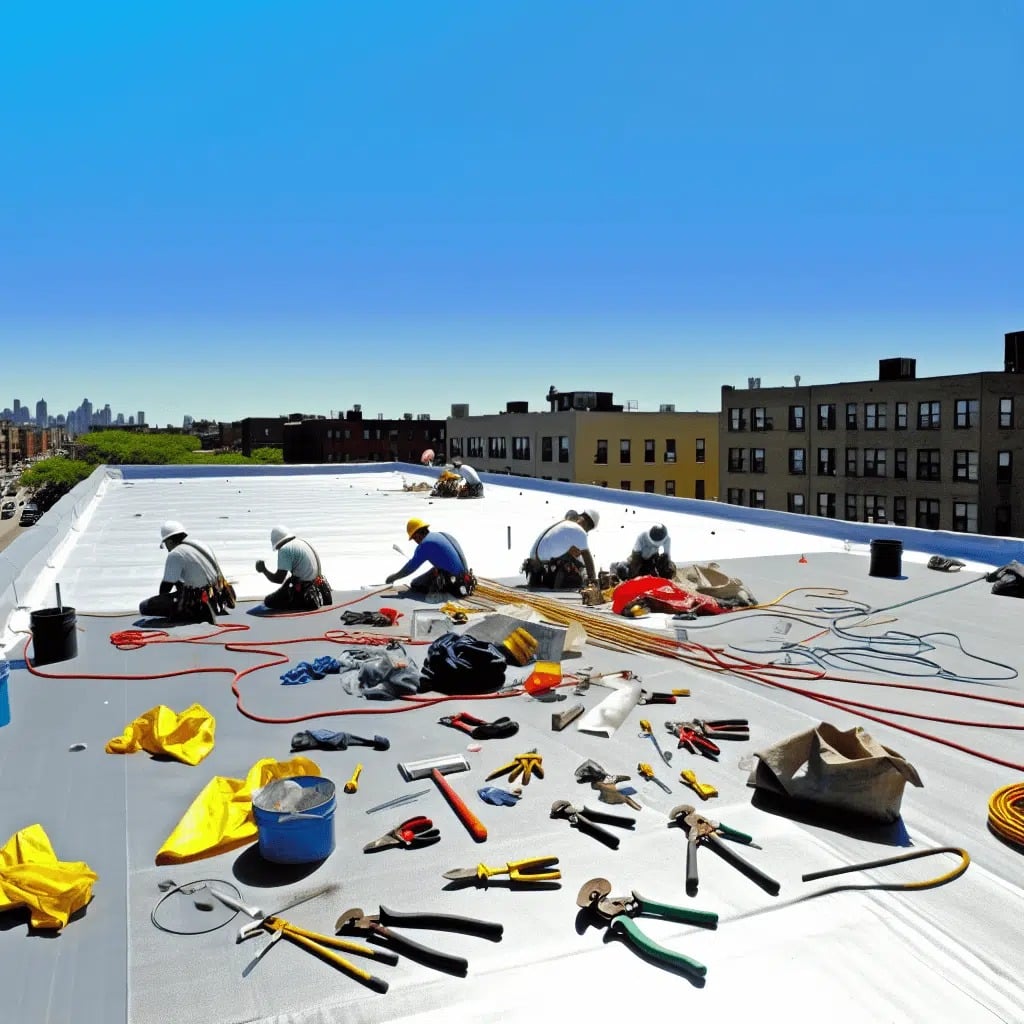Take Immediate Action After Storm Damage
In the wake of a severe storm, the safety of your home hinges on how swiftly you respond to roof damage. The chaotic aftermath can be overwhelming, but knowing the steps to take can be a lifesaver, not just for your peace of mind but also for preserving your home’s structural integrity. Immediate measures, such as emergency roof tarping, act as a critical barrier against the elements, providing a temporary but vital shield. It helps prevent water from seeping into your living spaces, thwarting further damage to interiors and averting potential electrical hazards.
Emergency situations demand decisive action to keep your property secure. Delayed responses not only escalate repair costs but also open the door to additional complications like mold and mildew, which thrive in damp environments. This threat to air quality in your home makes a prompt tarp installation even more essential. By securing your roof quickly, you also maintain the strength of your insurance claims, ensuring you can recoup the necessary funds for proper repairs.
Understanding the urgency of the situation is key to protecting one of your most significant investments: your home. Taking the right steps without delay can save you not only thousands in repairs but also protect cherished belongings from irrevocable damage. Partnering with seasoned professionals in roof damage prevention ensures that your tarp is installed correctly and efficiently, minimizing the risk of further damage during this vulnerable period. Remember, when a storm strikes, the clock starts ticking on the health and safety of your home, making immediate action non-negotiable.
Mastering Tarp Installation Steps
Tarping a roof is not a simple throw-and-go operation; it requires strategy and precision. Understanding the right techniques for tarp installation is crucial for creating an effective seal against the weather. Begin by selecting a tarp that is generously sized to extend well past the damaged area, and ensure it is anchored correctly to prevent wind uplift and water infiltration. Homeowners often question whether this is a task they should tackle alone, yet the complexity and risks involved typically call for professional expertise.
Choosing the Correct Materials for Temporary Roof Solutions
Selecting the correct tarp and anchoring materials can make all the difference in emergency roof protection. Heavy-duty, water-resistant tarps paired with strong, durable ropes or special fasteners form the backbone of effective temporary roof solutions. These materials work in unison to provide the strength and resilience needed to weather the interim period before permanent repairs can be made. In addition to material considerations, how the tarp is affixed plays a pivotal role in the longevity and efficacy of the protection it offers.
Why Professional Services Are Essential
When it comes to safeguarding your home after damage, enlisting the help of professionals is often the smartest move. Roofing experts bring a wealth of knowledge and experience to the table, ensuring that temporary fixes like emergency roof tarping are executed flawlessly. They understand the nuances of proper positioning and securing the tarp, tasks that may appear deceptively simple to the untrained eye. Moreover, professional services stand behind their work, offering peace of mind that your temporary measures are as robust as possible while you plan for permanent repairs.
Ensuring Durability Amidst the Elements
A professionally installed tarp serves as a resilient stopgap, safeguarding your home against the elements until repairs can commence. It’s designed to withstand wind, rain, and debris for a significant amount of time, minimizing the potential for escalated damage. However, it’s essential to monitor its condition regularly, looking for signs of wear or displacement that could undermine its effectiveness. A well-secured tarp can mean the difference between a quick fix and a costly, extensive repair job down the line. Homeowners should take this interim solution seriously, as it plays a crucial role in the overall recovery of their property.
Trusting Expertise and Experience
As you navigate the post-storm recovery process, remember that a hasty fix can often lead to further complications. Trust in the expertise of credible professionals who are adept at emergency measures and can provide the best temporary solution. A roofing expert is equipped to assess the situation swiftly and deliver a rigorous temporary fix that adheres to industry standards. This level of professionalism not only secures your home but also streamlines the transition to permanent repairs with minimum fuss and maximum efficiency.
Final Considerations and Next Steps
In wrapping up, the importance of temporary protection like tarping cannot be overstated. Even as you rely on this quick solution, plan for a comprehensive roof inspection to identify any underlying issues that need addressing. Roofing professionals at Rinaldi Roofing are ready to assist in assessing the damage and plotting a course for necessary repairs. They bring assurance that meticulous attention to detail will be given, ensuring your roof is restored to its pre-storm condition or better. Trust and peace of mind come from knowing that, even in emergencies, you have expertise on your side.
Proven Safety Measures for Emergency Tarping
Tip 1:
If you’re considering tarping your roof yourself, prioritize safety. Always use a secure ladder, wear non-slip shoes, and never attempt the task alone, especially in windy or wet conditions.
Tip 2:
Choose the right tarp for the job. Heavy-duty tarps are more durable and offer better protection against the elements. Make sure the tarp is large enough to cover the damaged area and extend over roof peaks or edges.
Tip 3:
Secure the tarp properly to prevent moisture seepage and wind uplift. Use sturdy, weather-resistant ropes or straps, and secure them tightly to stable structures like the roof frame or heavy-duty nail heads.
Tip 4:
Inspect the tarp regularly, especially after bouts of heavy rain or wind. Promptly address any tears or dislodging to maintain the integrity of the emergency protection.
Tip 5:
Consult with roofing professionals for a comprehensive evaluation. Reliable roofers can provide valuable insights on whether further repairs are needed and help plan for long-term solutions beyond the temporary fix of tarping.
Your Emergency Roof Tarping Questions Answered
How quickly should I get my roof tarped after a storm?
It’s critical to tarp your roof as soon as it’s safe to do so after a storm. Quick action minimizes the risk of water damage and the associated repair costs.
Can I tarp my roof myself, or should I hire professionals?
While it’s possible to tarp a roof yourself, hiring professionals ensures the job is done safely and correctly, protecting you and your home from further damage.
How long can a temporary roof tarp last before I need repairs?
A temporary roof tarp can last several weeks to months, but it’s crucial to schedule permanent repairs as quickly as the situation allows.
What are the steps for proper tarp installation to ensure maximum protection?
Proper tarp installation includes using the right size tarp, securing it with sturdy materials, ensuring it extends past damaged areas, and is anchored tightly.
What should I consider when choosing materials for emergency roof tarping?
When selecting a tarp material, consider durability, water resistance, and the tarp’s ability to withstand the specific weather conditions of your area.



